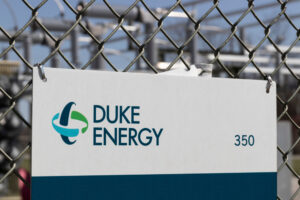
Duke Energy, GE Tap AWS to Help Balance the Green Grid of the Future

(crystal51/Shuttertock)
The electricity grid of the future will not only be powered from greener sources, but it will also be several times bigger than it is today, thanks mandates to eliminate the use of gasoline and diesel for transportation and natural gas for heating and cooking. Balancing energy supply and demand in this environment will be far tougher than it is today and require huge amounts of data and computing power, which is why AWS is partnering with companies like Duke Energy and General Electric.
Eliminating fossil fuels for electricity production and transportation is expected to bring a host of benefits, including less air pollution and a reduction in carbon dioxide. But turning off reliable baseline power generation from fossil fuels introduces tough new operational problems to the equation, including the need to balance intermittent energy from wind and solar against the backdrop of an overall increase in demand.
AWS unveiled a partnership with North Carolina-based Duke Energy last year that will see the two utilities work together to develop new analytic tools to provide more clarity on how the green grid of the future should be built.
Duke Energy, one of the largest utility companies in the United States, has developed in-house analytic tools that allow it to crunch data collected from smart electric meters. The meters collect data at a relatively fine-grained level, which Duke uses to forecast energy consumption and determine where it should invest in building new power plants, installing new transmission lines, siting new substations, or upgrading distribution lines.
Duke relies on these power flow analyses to ensure that the grid remains safe and reliable as the nature of power generation and consumption patterns change, said Bonnie Titone, Duke’s CIO and senior vice president.
“You don’t think about the energy when you go and purchase [an electric vehicle] or when Walmart wants to build a new building and have it fully powered by solar. You’re not thinking about, can the energy grid handle that?” Titone said. “We have to get in front of that, so that when they ultimately plug it in, it just works.”
However, due to limitations in data storage and compute resources, Duke isn’t able to collect data at the needed intervals, nor run these power flow analyses often enough to keep up with the expected demands of the green grid of the future, Titone told Datanami at the AWS re:Invent show in Las Vegas last fall.
“If you think about the sheer volume of every customer who’s using power in some way shape or form, certainly we have meters to capture that information,” Titone said. “But…we only get that information in intervals. If we can reduce that interval to something [like] seconds or minutes, you have a better way to understand who’s using your power, when are they using it, and where are they using it from.”
Solving these power flow problems comes down to sheer number crunching power. If you gave Titone a couple of months, she could give you the per-person energy usage data for the city of Charlotte, North Carolina, where Duke is based.
“But to do it for 8.2 million customers, including commercial and industrial customers like this,” Titone said, snapping her fingers, “that’s why we need the processing power and the pieces that AWS is building. We wouldn’t have the ability to do it at that pace and scale.”
The partnership between Duke and AWS will see engineers from the two companies working to develop new analytic tools that have the scale to generate not only the short-term energy forecasts that Duke needs to keep its grid running day-to-day, but also the capacity for long-range predictions that will go into siting where utility infrastructure should be built to optimally power the green grid of the future.
“More and more, that data needs to be real time, because you have to be able to match the supply that’s coming in the grid,” said Sarah Cooper, general manager of industry products for AWS. “The sun doesn’t always shine and the wind doesn’t always blow.”
Duke has already built a suite of analytics tools that run on “a huge Hadoop farm,” Titone said. The system has worked for Duke up to this point but wasn’t designed to run in the cloud. The plan calls for Duke and AWS engineers to work together to take what they need from that existing suite of tools and modify it to run in the cloud. AWS would then be free to sell the new suite of tools to other energy utilities that have similar needs as Duke. The new solution will not be a shrink-wrapped solution that can just be dropped into place, however; it would need to be tailored to the utility customers’ unique needs.
AWS is also working with a General Electric subsidiary to do something similar. The partnership with GE Digital, which was announced today, will see the two corporate giants enter into a multi-year deal to deliver “intelligent grid orchestration solutions.”

AWS is also working with GE Digital and Vector Limited, the largest energy utility in New Zealand (Image source: Wikipedia)
“Achieving the goal of a clean energy grid requires utilities and their technology partners to accelerate and scale the deployment of innovative, secure, and cost-effective solutions,” Mahesh Sudhakaran, general manager of grid software at GE Digital, said in a press release. “This collaboration brings together GE Digital’s GridOS hybrid cloud software capabilities with the expertise and infrastructure support of AWS to help utilities transform their operations and meet their goal of providing reliable, affordable, and clean energy.”
AWS is already working with Vector Limited, which is New Zealand’s largest distributor of electricity and gas. The Auckland-based company has deployed GE Digital’s Advanced Distribution Management System (ADMS) software on AWS Outposts to help manage its grid.
“Grid decentralization and decarbonization–driven by the integration of distributed renewable energy sources like solar and wind–are advancing quickly,” Howard Gefen, AWS’s general manager for energy and utilities, said in a press release. “Using the power and capabilities of the cloud in combination with grid orchestration software from GE Digital, utilities can embrace emerging technologies like Internet of Things and high-performance computing to innovate faster, and balance the urgent need to decarbonize the grid and deliver more reliable and affordable energy to their customers.”
MIT-IBM Watson AI Lab Tackles Power Grid Failures with AI
Can Digital Twins Help Modernize Electric Grids?
Utilities Sitting on Energy Data Goldmine





























